Spain
![]()
We entered Spain in Barcelona, no customs, no immigration, no hassle (unlike Philadelphia but that is another story). Since I had never been in the interior of Spain and since Gail hadn't been in Spain in almost 30 years we decided to this portion of the trip a little differently. For five of the 7 nights we were in Spain we stayed in Paradores, which were and may still be, government run tourist hotels. For the most part, these hotels were built in old buildings such as castles, monasteries, etc. For a complete listing of them, reservations, and other info visit http://www.parador.es/english/index.jsp We chose the first stop as one near Barcelona and then Gail chose four that she had visited in the past that she really liked and wanted to go back to. Neither of us performed a sanity check on the distance between stops and the old Parador map wasn't as nice as the one they now use (click on Map or the icon above to see their map with our stops indicated).
With that background in mind, here is the first one we stayed
at, a castle built around 1100AD in Cardona
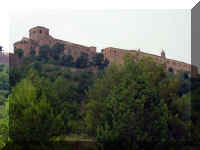 Some parts of the interior have been modernized more than others.
Some parts of the interior have been modernized more than others.
This is a sitting room
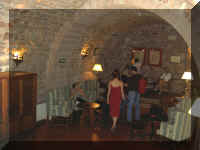 outside of the restaurant, shown here
outside of the restaurant, shown here
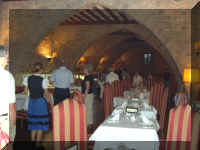 .
.
Paradors, at least the ones we visited, have neat sitting areas
scattered around and like the halls, are always well decorated in products of
the region or antiques.
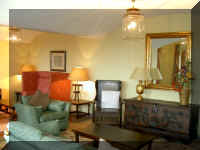
From Cardona we drove across the country to Santiago de Compostela, stop 2 on the map. This building opened as a hospital in 1499 to provide for the needs of the pilgrims who came to see one of the top religious attractions of the middle ages, the tomb of St. James. People still walk to Santiago from all over Europe and while I was sitting in the square one morning two groups of young people arrived with much cheering, singing, and kissing of the ground.
On our way across the country we crossed over the prime
meridian, 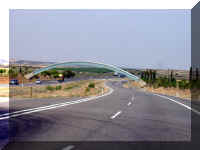 or
from east longitude to west longitude, or we were due south of Greenwich,
England while still in eastern Spain.
or
from east longitude to west longitude, or we were due south of Greenwich,
England while still in eastern Spain.
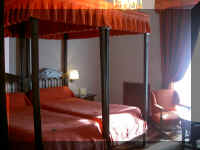 This was our room at Santiago.
This was our room at Santiago.
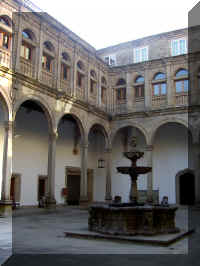 and one of the courtyards inside it.
and one of the courtyards inside it.
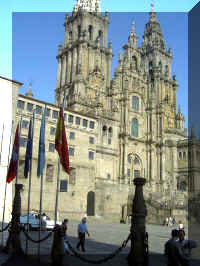 The cathedral where St. James is entombed.
The cathedral where St. James is entombed.
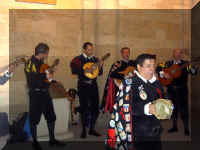 That evening we stopped by and listened to the Tuna of the University of
Compostela play old fashioned instruments and sing old songs. A Tuna
is a group (normally students but not always so) that entertains to make money
to pay for their education.
That evening we stopped by and listened to the Tuna of the University of
Compostela play old fashioned instruments and sing old songs. A Tuna
is a group (normally students but not always so) that entertains to make money
to pay for their education.
Another interior shot showing
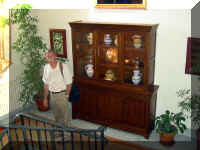 the fine furniture and antiques found in the Paradors.
the fine furniture and antiques found in the Paradors.